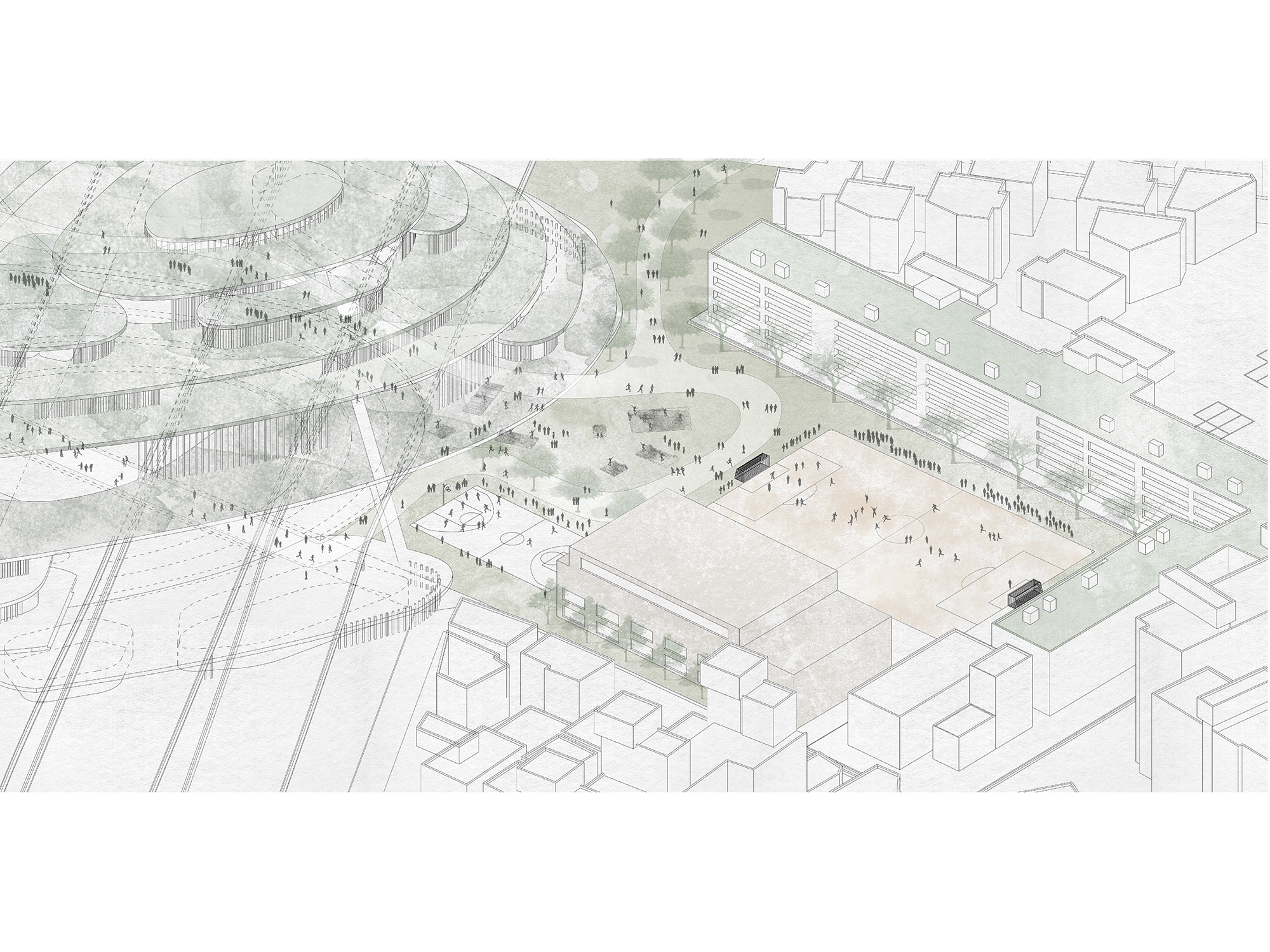Resilient Han River_ 물의 변화에 적응한 도시
한강공원의 이용자 수는 연간 6천 800명 정도이다. 그러나 실내활동은 전체의 1%이며 그 활용방법은 상당히 제한적이며 임시적이다. 그러나 과거 강변은 인간과 비인간이 공존하며 포장되지 않은 땅은 퇴적섬과 강수욕장 등 다양한 지형과 활동을 만들었다. 사람들은 점점 경사가 얕아지는 강변에서 강과 연관된 활동을 즐겼다. 왜 현재의 한강은 바라만 보는 강이 되었을까? 왜 도시의 일부가 아닌 독자적 성격을 가지는 공허부가 되었을까?
강변이 현재와 같은 모습이 된 이유 중 하나가 강의 범람이라고 생각되었다. 범람에 대한 심리적 위협으로 축조한 제방은 한강에서 영구적 프로그램의 가능성을 제약하며 한강을 독자적인 성격을 띄는 곳으로 만들었다. 1965년과 1966년에 발생한 대홍수는 인공제방을 비롯한 수방대책에 집중하는 계기가 되었고, 수변풍경은 과거와 다른 모습을 지니게 되었다.
그럼에도 이와 같은 방어적인 방법은 인간의 활동범위를 제한하였고, 여전히 일정 이상의 범람을 마을 수 없으며 그로 인해 고여있는 한강은 점점 오염되었다.
한강에서의 활동을 제한하는 가장 큰 원인인 물의 수위변화를 이용한다면 이는 더 이상 두려움의 상황이 아니라 자연스럽게 받아들여질 것이다. 뚝섬 영역은 예로부터 비와 서해 조석의 영향을 받아 수위변화의 폭이 큰 곳으로 수위가 시시각각 변동한다.
물의 높이가 변화하는 상황에 적응된 장소가 생긴다면, 동시대 도시사람들에게 강과 연관된 부족한 활동을 제공하면서 날씨와 계절의 영향을 받지 않고 강변을 이용할 수 있을 것이다.
The number of users of Han-river Park is about 6,800 per year. However, indoor activities are only 1% of the total, and the utilization is quite limited and temporary. In the past, however, riversides coexisted with humans and non-humans, and unpaved land created various topographical features and activities, such as sedimentary islands and river beach. People enjoyed river-related activities along the gradually shallower slopes. Why did the present Han River become separated with us?
One of the reasons why the riverbank has become what it is today is because of the flooding of the river. The concrete embankment, built as a psychological threat to flooding, limits the possibility of permanent programs on the Han River, making the Han River an independent place. The Great Floods of 1965 and 1966 contributed to the concentration of flood control measures, including artificial embankments, and the waterfront landscape was different from the past.
Nevertheless, such a defensive method limited the scope of human activity, and still could not overcome a certain amount of flooding, and as a result, the stagnant Han River was increasingly polluted.
If we take advantage of the change in water level, which is the biggest cause of limiting activities in the Han River, it will no longer be a fearful situation, but will be accepted naturally.
The Ttuk-seom area has been affected by rain and tidal waves in the West Sea, and the water level fluctuates from time to time. If there is a place adapted to a situation where the height of water changes, the riverside could be used without being affected by the weather and seasons, providing contemporary urban people with insufficient activities related to rivers.














